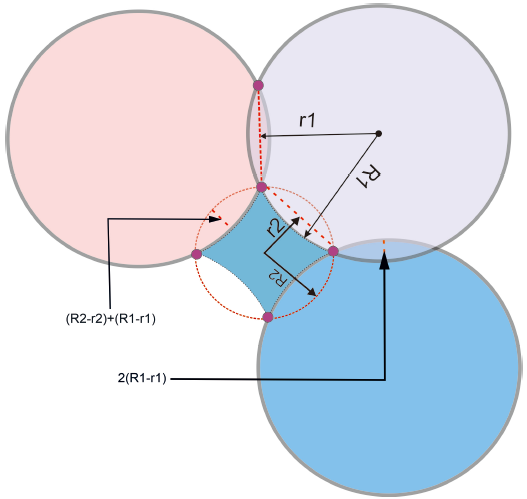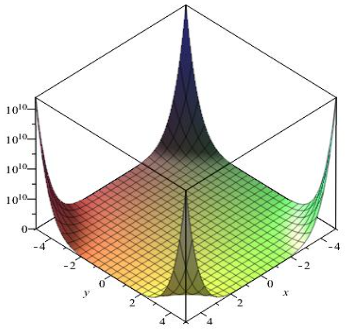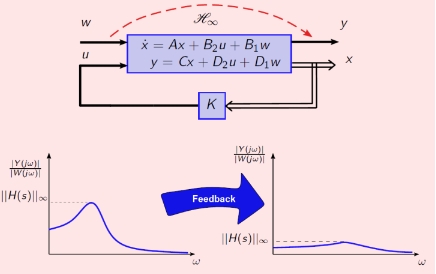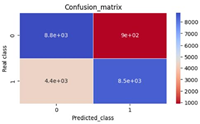Octagonal-square tessellation model for masting GSM network: A case study of MTN Kumasi-East, Ghana
Abstract
Masting in GSM network design is one of the most challenging problems in cell planning. The effect of uniform design pattern has been proven geographically to be hexagonal using uniform cell range. In this paper, we present a new uniform greedy semi-regular tessellation model called the octagonal square tessellation model (OSTM) to address the problem of global minimum overlap difference and area. Data from MTN Kumasi-East Ghana was collected and analyzed using the developed model. The original layout for the 0.6 km cell range accounted for an overlap difference of 937.66 m and a total area of 21.41 km2 for 50 GSM mosts whereas the OSTM model accounted for an overlap difference of 1316.95 m with an area of 34.23 km2. This is a 59.87% reduction of the original total area. Our solution is shown to be optimal in overlap difference and area for non-uniform cell range.
References
[1]Raisanen L. Multi-objective site selection and analysis for GSM cellular network planning. Cardiff University, Department of Computer Science; 2005.
[2]Mehrotra A. GSM System Engineering. Artech House, Inc.; 1996.
[3]Scourias J. Dynamic Location Management and Activity-based Mobility Modelling for Cellular Networks [Master’s thesis]. University of Waterloo; 1997.
[4]Franeshetti M, Cook M, Bruck J. A Geometri Theorem for Approximate Disk Covering Algorithms. California Institute of Tehnology; 1999.
[5]Liao C, Hu S. Polynomial time approximation schemes for minimum disk cover problems. Journal of Combinatorial Optimization. 2010; 2020(20): 399–412.
[6]Hu N. Approximation Algorithms for Geometric Covering Problems for Disks and Squares [Master’s thesis]. University of Waterloo; 2013.
[7]Fowler RJ, Paterson MS, Tanimoto SL. Optimal Packing and Covering in the Plane are NP-Complete. Information Processing Letters. 1981; 12(3): 133–137.
[8]Clarkson KL, Varadarajan K. Improved Approximation Algorithms for Geometric Set Cover. In: Proceedings of the Annual Symposium on Computational Geometry; 6–8 June 2005; Pisa, Italy. pp. 43–58.
[9]Bai X, Kumar S, Xuan D, et al. Deploying Wireless Sensors to Achieve Both Coverage and Connectivity. In: Proceedings of the 7th ACM International Symposium on Mobile AD Hoc Networking and Computing; 22–25 May 2006; Florence, Italy. pp. 131–142.
[10]Carmi P, Katz M, Lev-Tov N. Covering Points by Unit Disks of Fixed Location. Springer-Verlag Berlin Heidelberg; 2007. pp. 644–655.
[11]Funke S, Laue S, Lotker Z, et al. Power assignment problems in wireless communication: Covering points by disks, reaching few receivers quickly, and energy-efficient travelling salesman tours. Ad Hoc Networks. 2011; 2011(9): 1028–1035.
[12]Han X, Cao X, Lloyd EL, et al. Deploying Directional Wireless Sensors with Guaranteed Coverage and Connectivity. Department of Computer and Information Sciences, University of Delaware; 2007.
[13]Xu X, Song M. Restricted Coverage in Wireless Networks. In: Proceedings of the IEEE INFOCOM 2014—IEEE Conference on Computer Communications; 27 April–2 May 2014; Toronto, ON, Canada. pp. 558–564.
[14]Yang D, Fang X, Xue G, et al. Relay Station Placement for Cooperative Communications in WiMAX Networks. In: Peoceedings of the 2010 IEEE Global Telecommunications Conference GLOBECOM 2010; 6–10 December 2010; Miami, FL, USA.
[15]Ionascu EJ. Half Dominition Arrangements in Regular and Semi-Regular Tessellation Type Graphs. The Electronic Journal of Combinatorics. 2012. doi: 10.48550/arXiv.1201.4624.
[16]Grünbaum B, Shephard GC. Tiling and Paterns. Courier Dover Publications; 1987.
[17]Pellicer D, Williams G. Minimal Covers of the Archimedean Tilings, Part I. The Electronic Journal of Combinatorics. 2012; 19(3): 1–37.
[18]Mixer M, Pellicer D, Williams G. Minimal Covers of the Archimedean Tilings, Part II. The Electronic Journal of Combinatorics. 2013; 20(2): 1–19.
[19]Coulbois T, Pellicer D, Raggi M, et al. The topology of the minimal regular covers of the Archimedean tessellations. Advance Geometry. 2015; 15(1): 77–91.
[20]Das GK, Fraser R, Lóopez-Ortiz A, et al. On the Discrete Unit Disk Cover Problem. International Journal of Computational Geometry & Applications. 2012; 22(5): 407–419.
Copyright (c) 2024 Elvis Kobina Donkoh, Francois Mahama, Shaibu Osman, Dominic Otoo, Joseph Ackora-Prah

This work is licensed under a Creative Commons Attribution 4.0 International License.











